Not many people can say they’ve assisted scientists in Africa on a rhino horn trimming study – but a group of Elmwood/Plum City students can.
Led by Elmwood High School science …
This item is available in full to subscribers.
To continue reading, you will need to either log in, using the login form, below, or purchase a new subscription.
If you are a current print subscriber, you can set up a free website account and connect your subscription to it by clicking here.
Otherwise, click here to view your options for subscribing.
Please log in to continue |
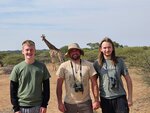
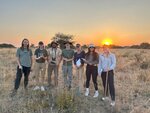
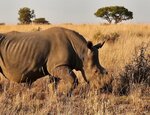
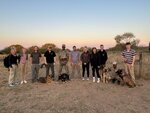

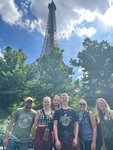
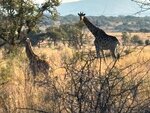
Not many people can say they’ve assisted scientists in Africa on a rhino horn trimming study – but a group of Elmwood/Plum City students can.
Led by Elmwood High School science teacher/Community Education Director Kristel Boyer and Nathan Winger, Emily Pickerign (recent Elmwood graduate), Katie Feuker (recent Elmwood graduate), Landen McDonough (Plum City sophomore), Luke Bataglia (Plum City senior), and Izzy Skogen (Elmwood senior) helped a Ph.D. scientist from United Kingdom for about two weeks study the White Southern Rhinoceros and their habits, vegetation, reactions, anti-poaching methods and strategies for preservation.
“A rhino horn is worth more than a diamond,” Boyer said. “One full adult horn is worth about $2.5 million or $65,000 per kilogram. It’s used in traditional medicines and as status symbols.”
Boyer learned of the expedition through Earthwatch, an organization that connects student with scientists worldwide to conduct environmental research and empowers them with knowledge to conserve the planet. Boyer and Feuker traveled to the Bahamas in 2019 through Earthwatch to study sea turtles.
Before they went to work in the wilds of South Africa, the group’s route took them through Paris, where they were able to experience a train ride Versailles, a riverboat tour of the Seine and a picnic beneath the Eiffel Tower.
“Me, Nate and Katie went to the Palace of Versailles,” Bataglia said. “I did not expect the rooms to be so massive inside the palace and the garden was a lot bigger than I was expecting.”
Boyer and Skogen went on the Seine through Paris, where they could see Notre Dame, the Louvres and Eiffel Tower. The city was abuzz with preparations for the upcoming Summer Olympics.
“We basically did everything you could do in Paris in one day,” Boyer joked. “Our picnic under the Eiffel Tower, we had baguettes.”
That night, the group flew into Johannesburg, South Africa, where they had to find a guide holding up a sign near the Nelson Mandela statue. For some, it was their first time on a plane or leaving the country. They went straight to their camp, located in the northwestern portion of South African near the Botswana border. The camp, called the Mankwe Wildlife Reserve, is operated by Lynne MacTavish and is comprised of 13,590 acres of protected land. Multiple research studies take place on the reserve, which collaborates with many United Kingdom universities. The reserve has been featured in an LA Times article on poaching and a David Attenborough documentary.
McDonough said he was looking for something new to do instead of being home all the time. Pickerign wanted to travel more before hunkering down in law school. Winger thought it would be an amazing experience.
“I don’t know if I would have gone otherwise,” he said. “It was a good experience to see the world and the different animals that Africa has to offer.”
Much of the existing research on the White Southern Rhino has not been updated since the 1970s, Boyer said. Thirty-four rhinos live on the reserve.
“Poachers will do just anything they can to take the whole horn of the rhino,” Boyer said.
“They’ll even cut off its face plate,” Bataglia added.
Scientists have found if they trim down the horn once a year, much like trimming a horse’s hooves, it can make the animal less desirable to poachers, Pickerign explained. The animals are tranquilized during the process.
“The horn is worth more than the animal itself,” Pickerign said. “If you can get rid of that horn, it can deter the poachers quite a bit. It lowers the risk but doesn’t eliminate the risk. It gives the rhinos much more of a chance.”
At Mankwe, scientists have been horn trimming for years, and studying its effects on the health of the animals. They also study the effects of stress by studying cortisol levels in their dung, the kind of vegetation they prefer and their eating habits.
“We were essentially the crew for this study,” Boyer said.
“We also used audio calls to observe their behavior,” Battaglia said. “Such as wildebeest warning calls. We watched their reaction to it, which was usually alarm and they would move away from it.”
The results of their studies will be published next summer in the UK. In those publications, the names of EPC students will be in the fine print. To show their gratitude, the kids brought EPC T-shirts to the scientists and cribbage boards (made by Peg Skogen) with rhino images embossed on them.
The crew’s time at Mankwe wasn’t without excitement. Game cameras put up by McDonough, Winger and Battaglia were stolen by poachers. They knew they were being watched.
“It makes you very aware that your movements and patterns are being watched on this game reserve,” Pickerign said. “You have to be proactive about interacting with the animals.”
The reserve was heavily guarded by an anti-poaching unit, complete with dogs. The group felt safe. McDonough said his favorite part of the trip was getting to watch the dogs at work with their handlers.
The group didn’t just work with no play. One day, they took a safari trip to Pilanesberg National Park, which was about 15 minutes away from their camp. They were able to see a mama cheetah, elephants, 14 rhinos, baboons, hippos and crocodiles. At the reserve, they had mostly large African animals, such as giraffes, water buffalo, warthogs, and of course, rhinos. Seeing giraffes at the watering hole became so commonplace, they stopped taking photos, Boyer laughed.
Winger had quite the scare one night when he awoke to a rhino named Willis grazing outside his tent. He was so tired from the long flights and excited to “sleep horizontally.”
“I got situated and all of a sudden, I heard chomping and breathing which had me on edge. It was a 6,000-pound animal outside my tent,” Winger recalled.
The group also had the opportunity to try local cuisine made with a lot of Afrikaans herbs.
“We ate a lot of wild game made alongside vegetables and rice,” Boyer said. “We tried wildebeest stir fry, antelope, kudu, babotie (a vegetable mixture over rice), impala.”
Battaglia won’t soon forget when Willis the rhino came super close to their vehicle.
“But then he walked away, went to get a drink of water and got scared by a tiny bird,” he laughed. “He did two 360s and sat his butt down on a rock.”
Pickerign admires the passion of the scientists, researchers and volunteers on the reserve.
“They all have passions for animals and conservation,” Pickerign said. “The anti-poaching units are passionate about giving their dogs a wonderful life and I enjoyed watching the bond between their handlers, how they all work as a team when they know poachers are on the reserve. It’s very seamless. They all got it down. They’ve caught about 96 or 98. Not all were rhino poachers. Some were meat poachers. Some were kids.”
Winger enjoyed learning how to identify different animal tracks. He noted they were there during the African winter.
“The highs were only in the 80s and in the night it got down right around to freezing,” he said. “It was the dry season. It only rained once and it didn’t rain much. There were hardly any bugs or mosquitos and a lot of the snakes were hibernating.”
Boyer thought every part of the trip was wonderful.
“I think my favorite part was watching my team step out of their comfort zone and thrive,” she said. “They were assisting the scientists and doing something new. The reserve said we were one of the best school groups. We were out until dark in the rain one night. We were efficient. Watching my team excel. They have asked us to come back. I would be willing.”
Battaglia, in fact, is planning to volunteer at Mankwe next summer for three months. The next EPC expedition opportunity will be in 2026. Africa is at the top of the list.